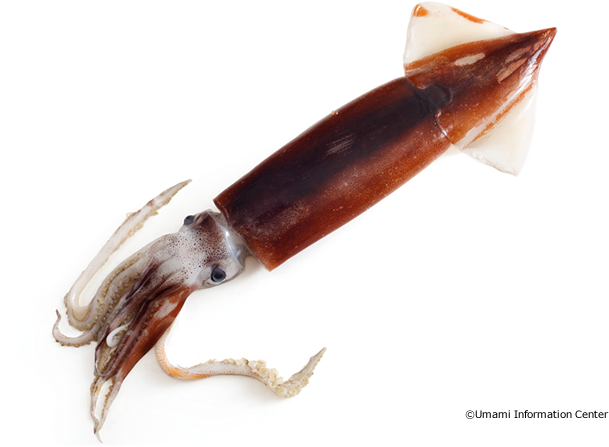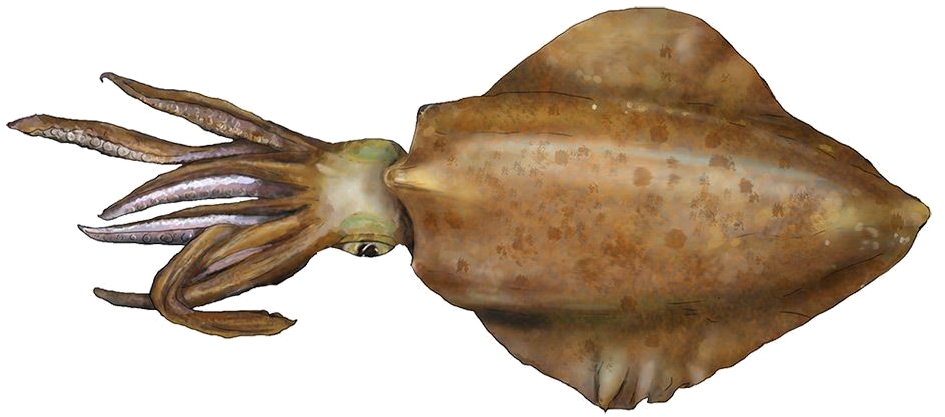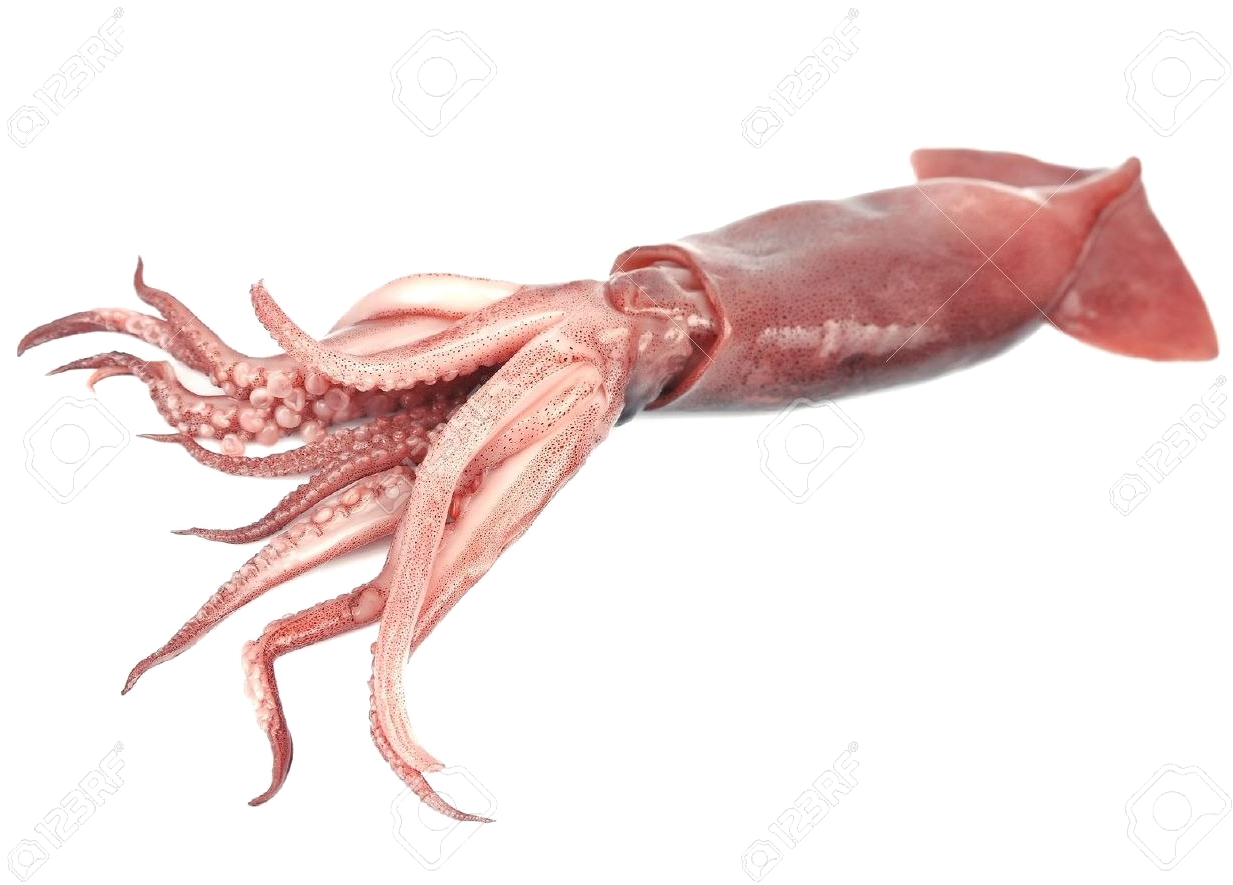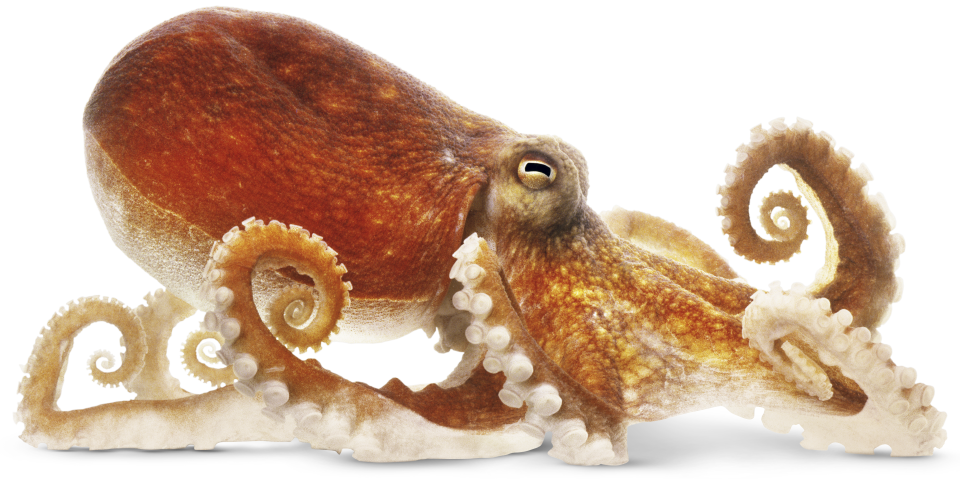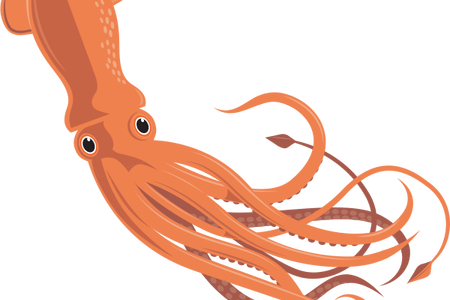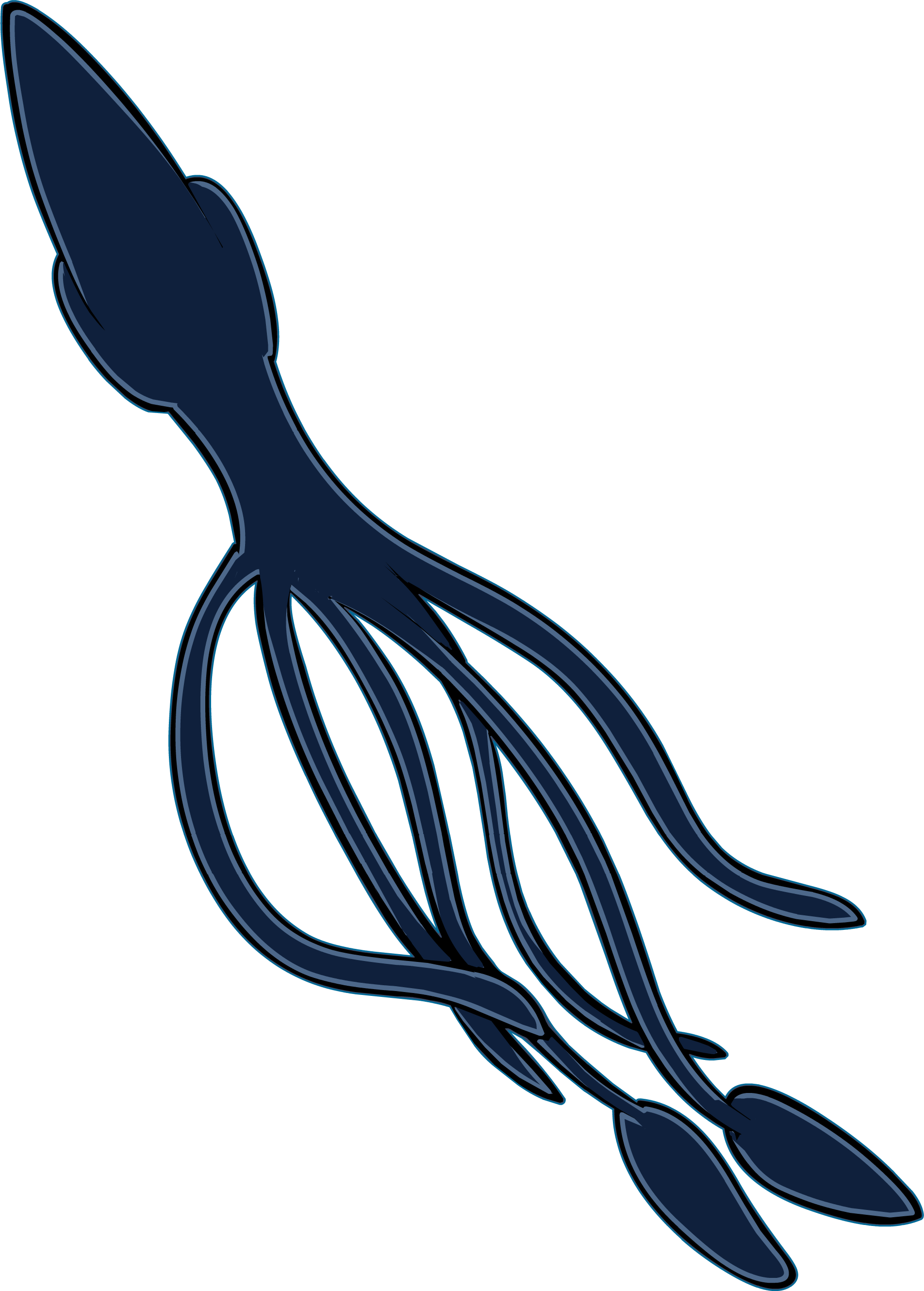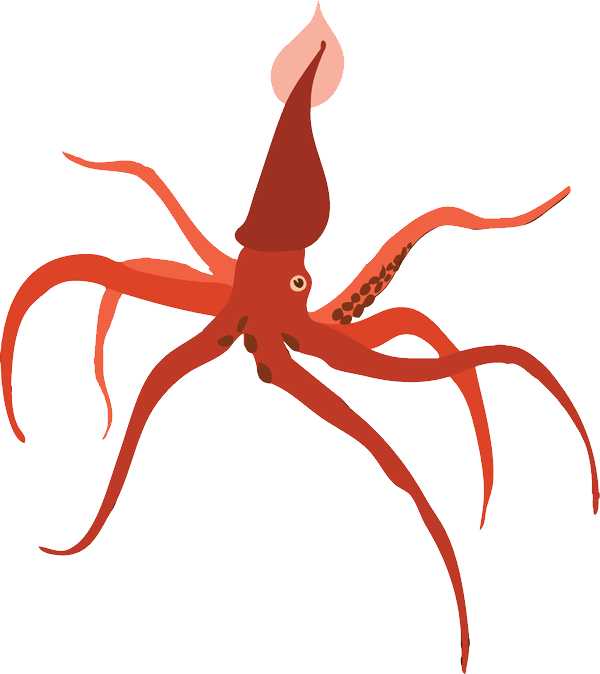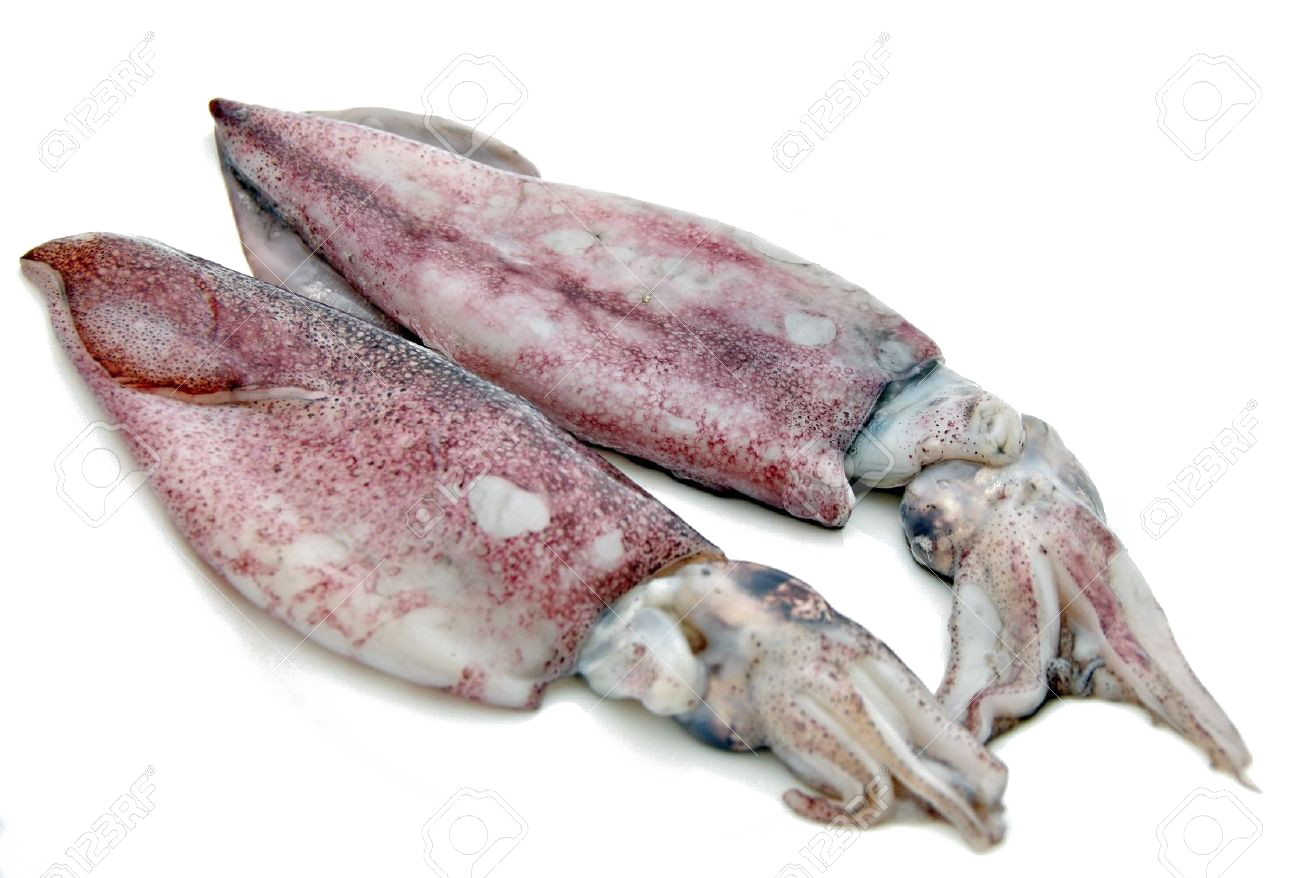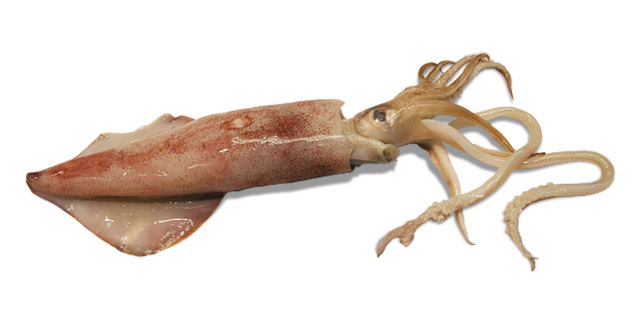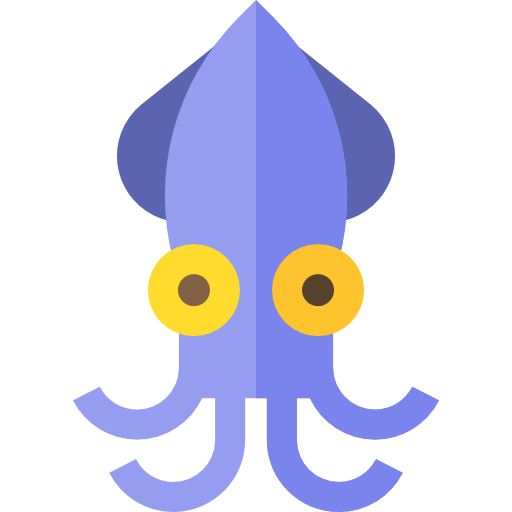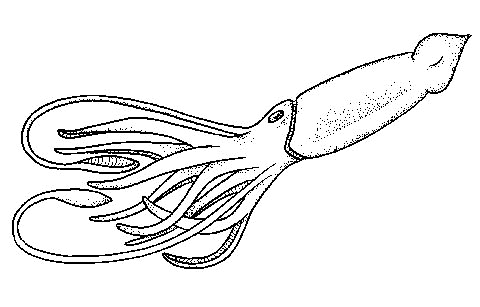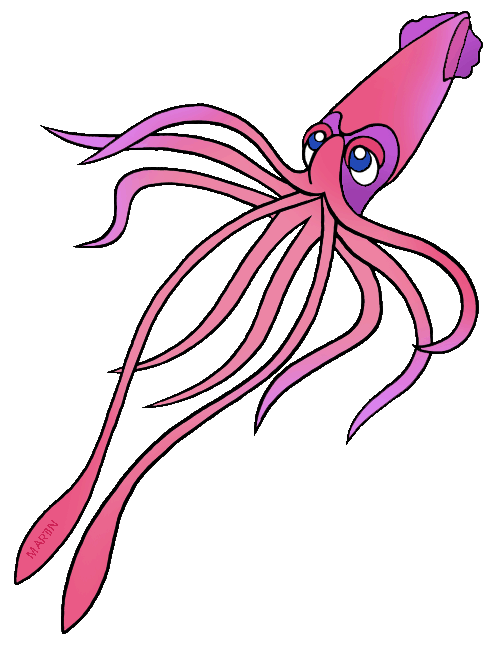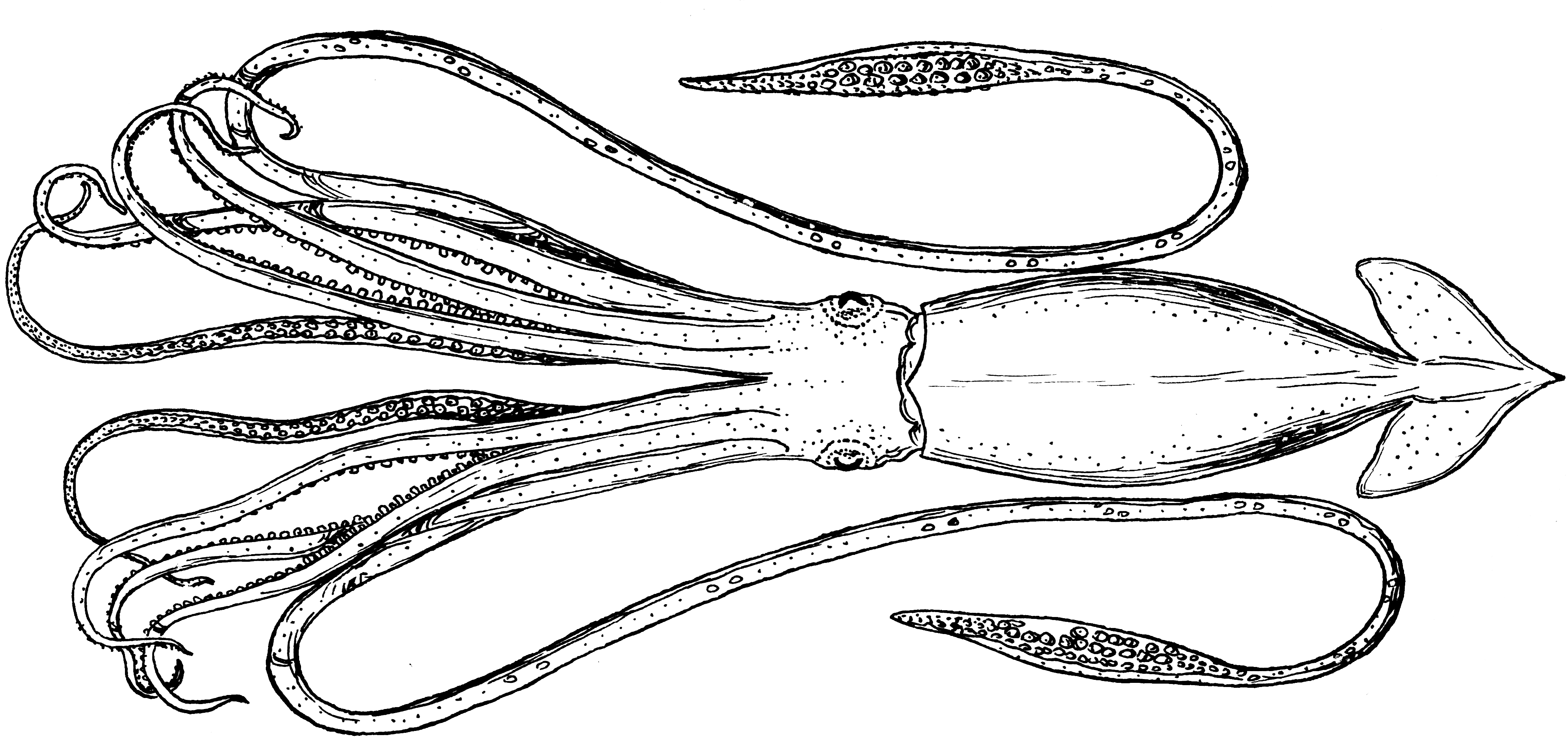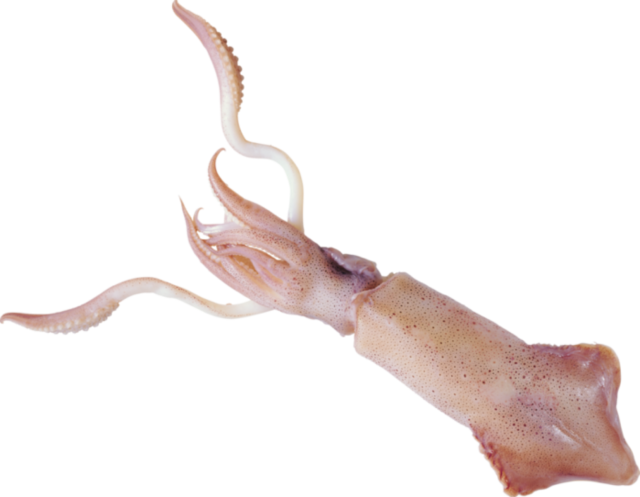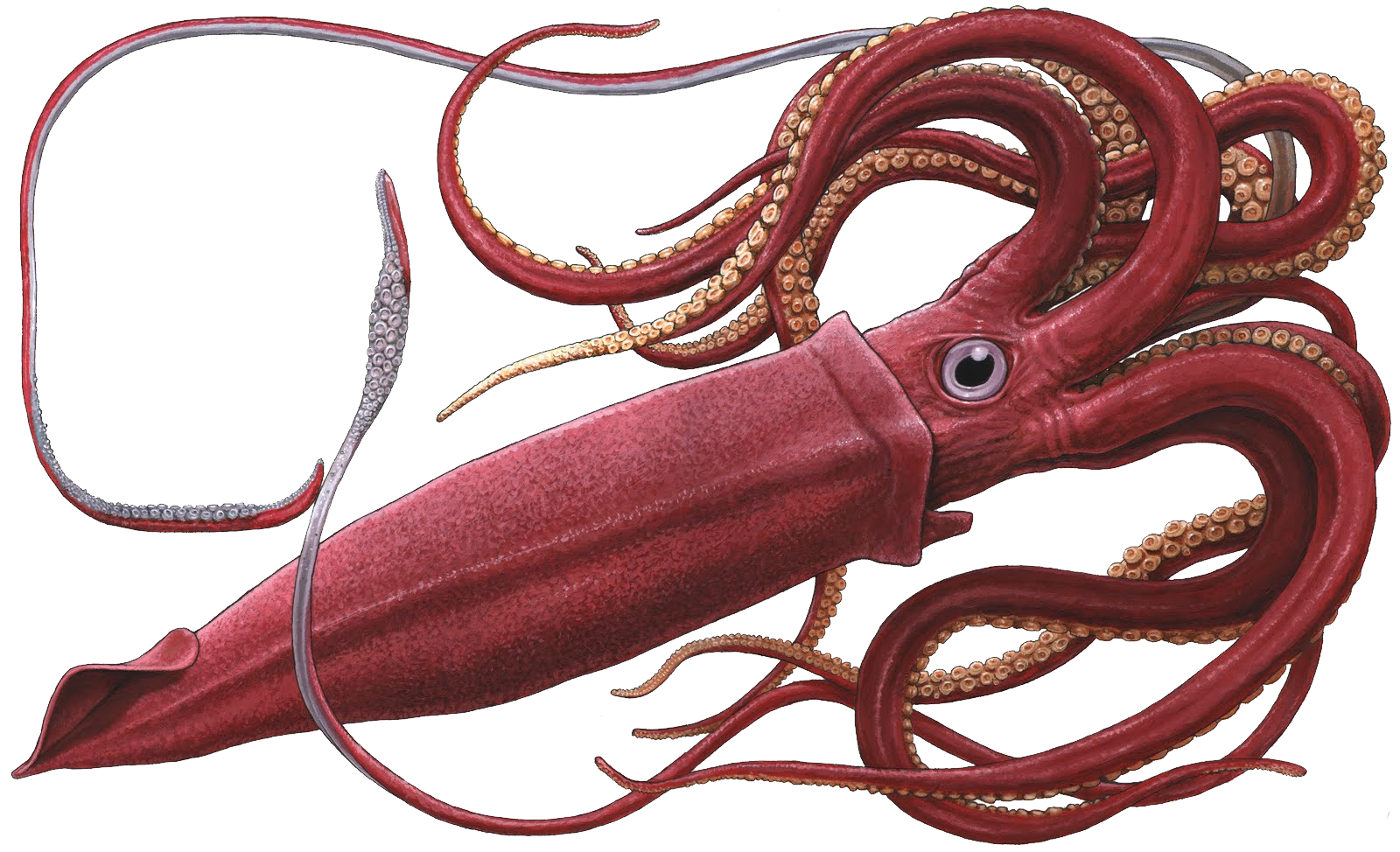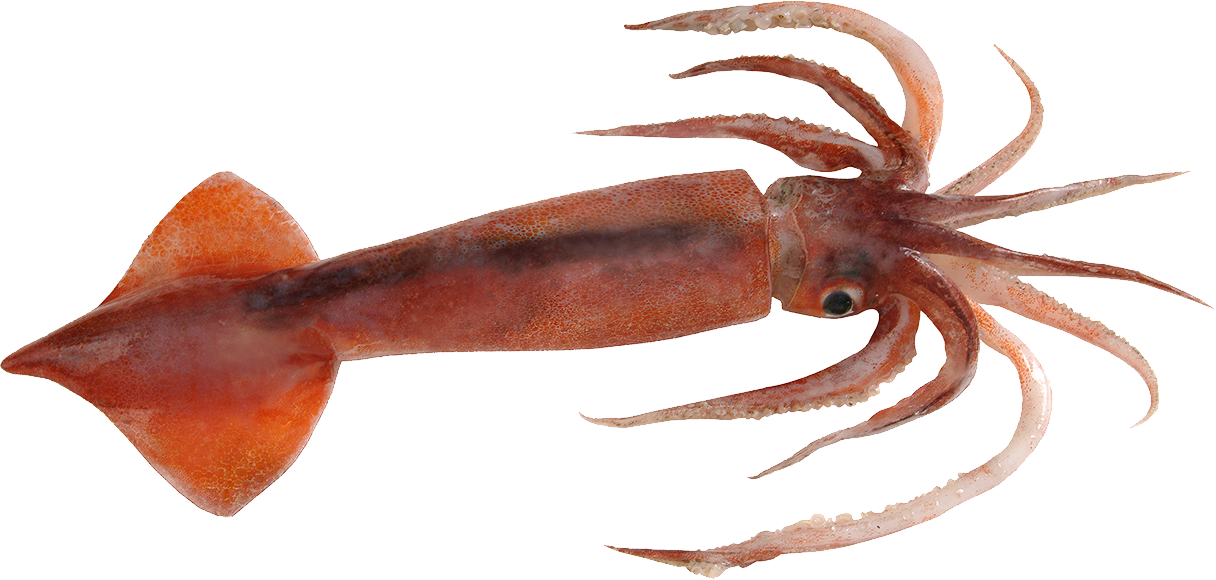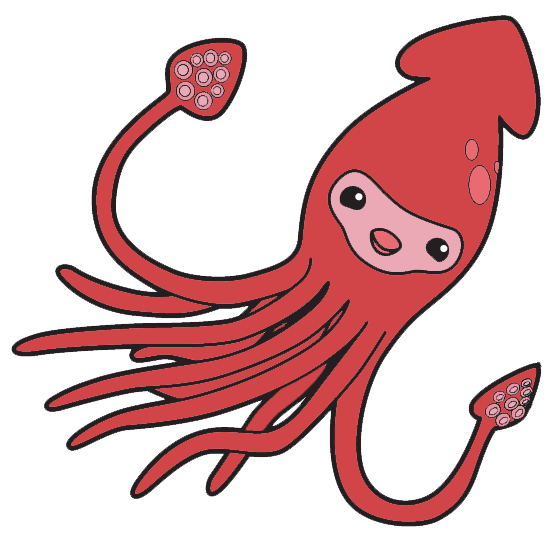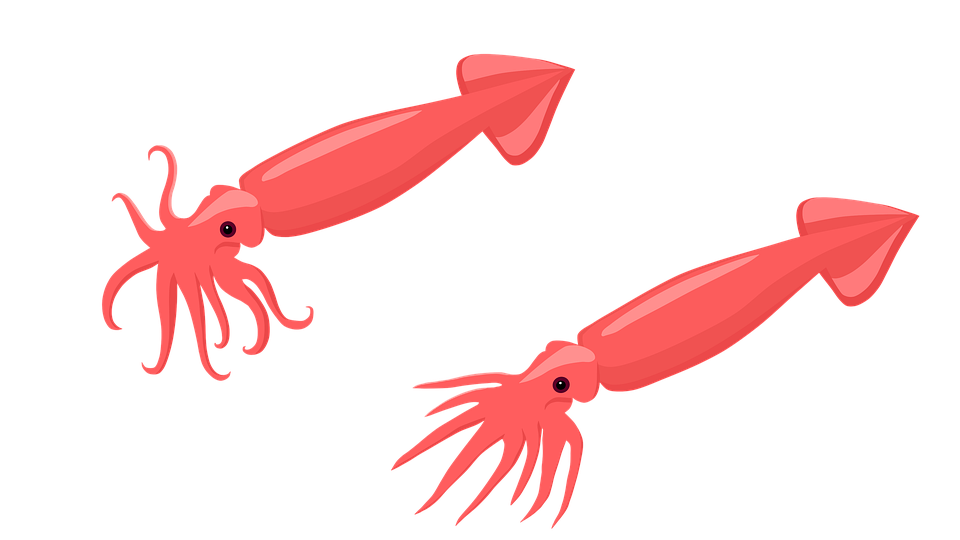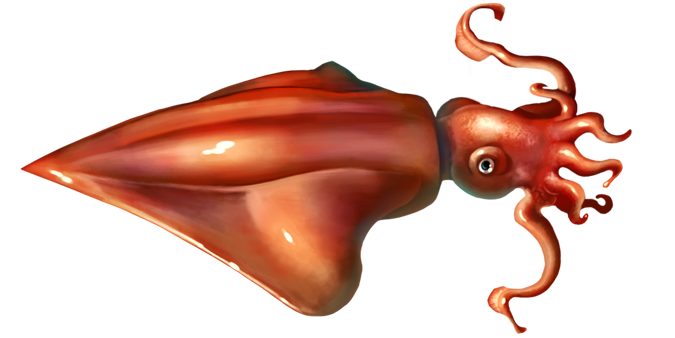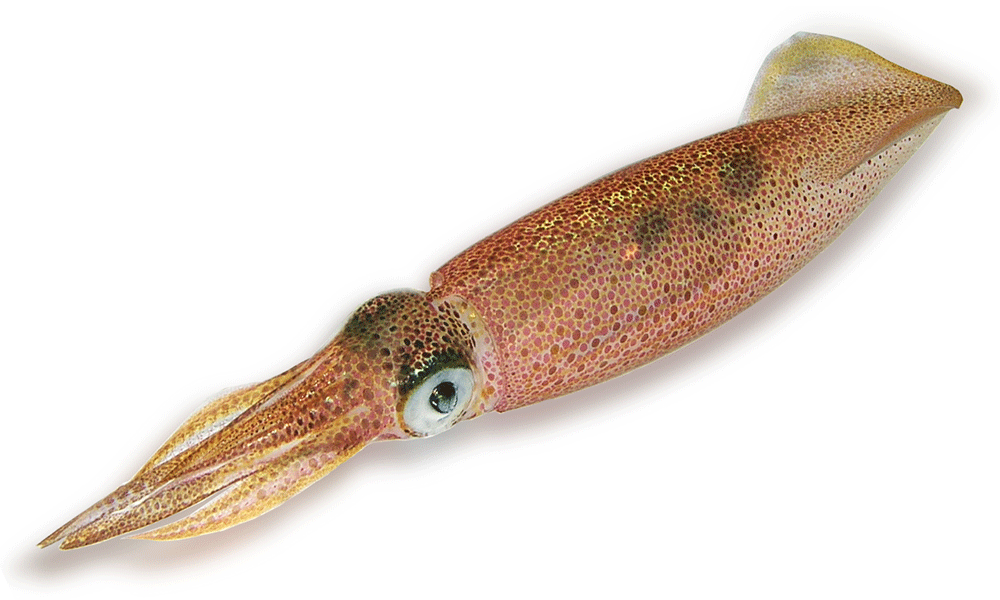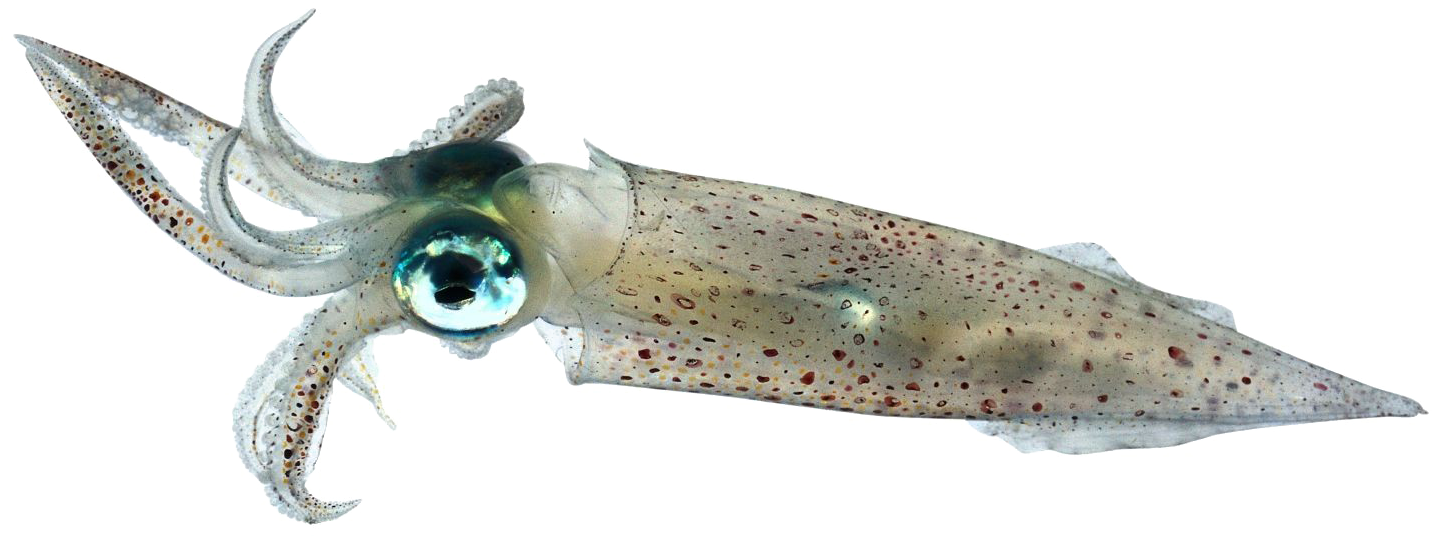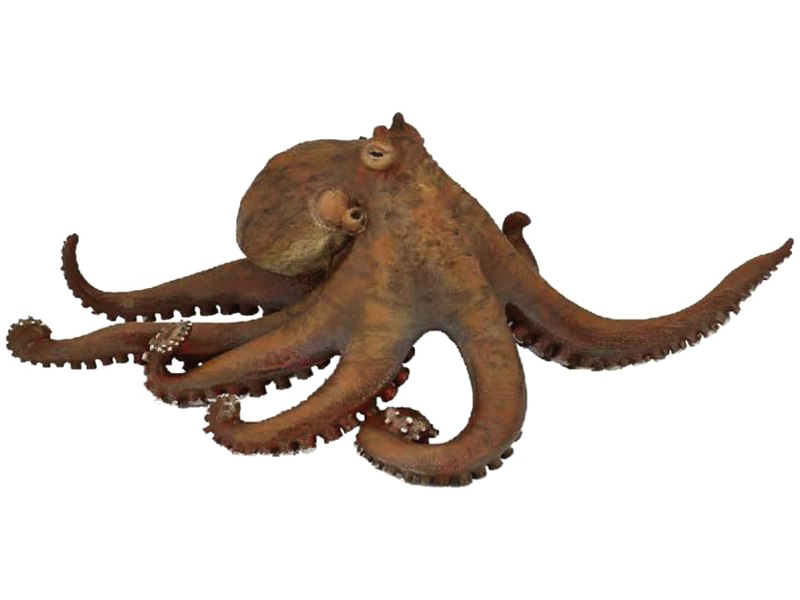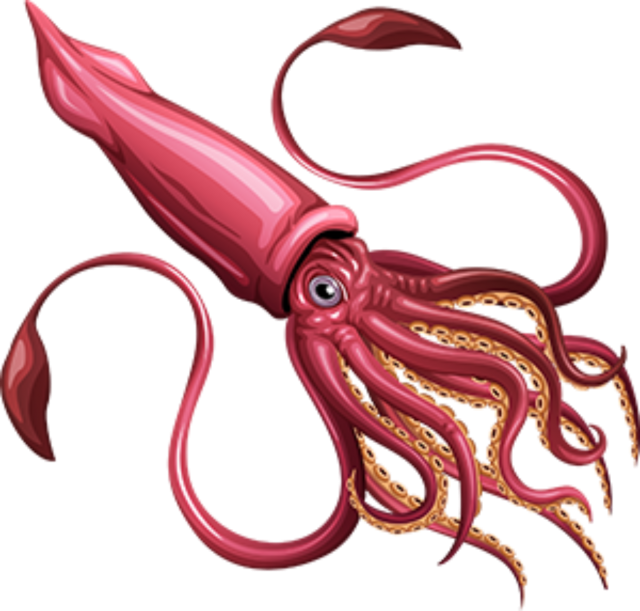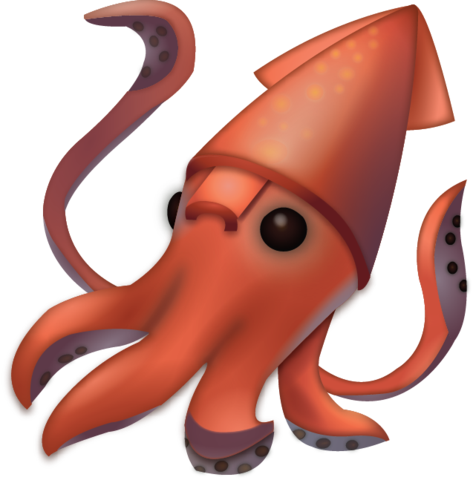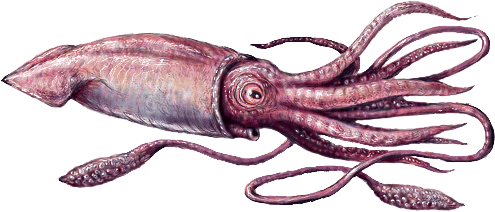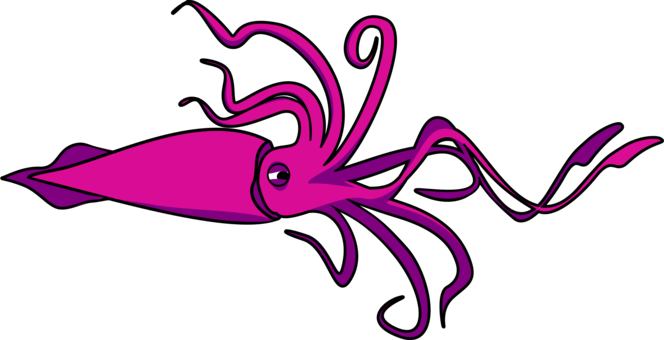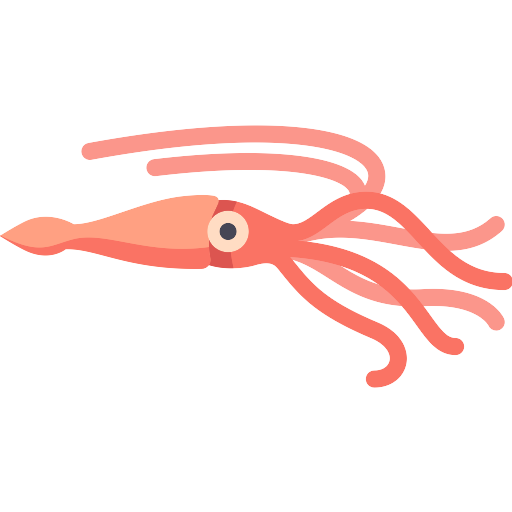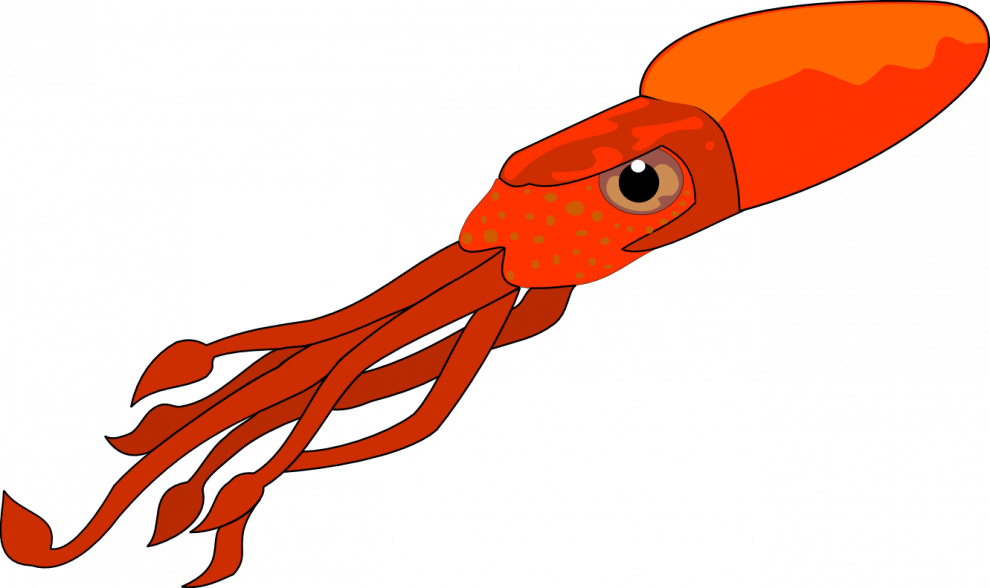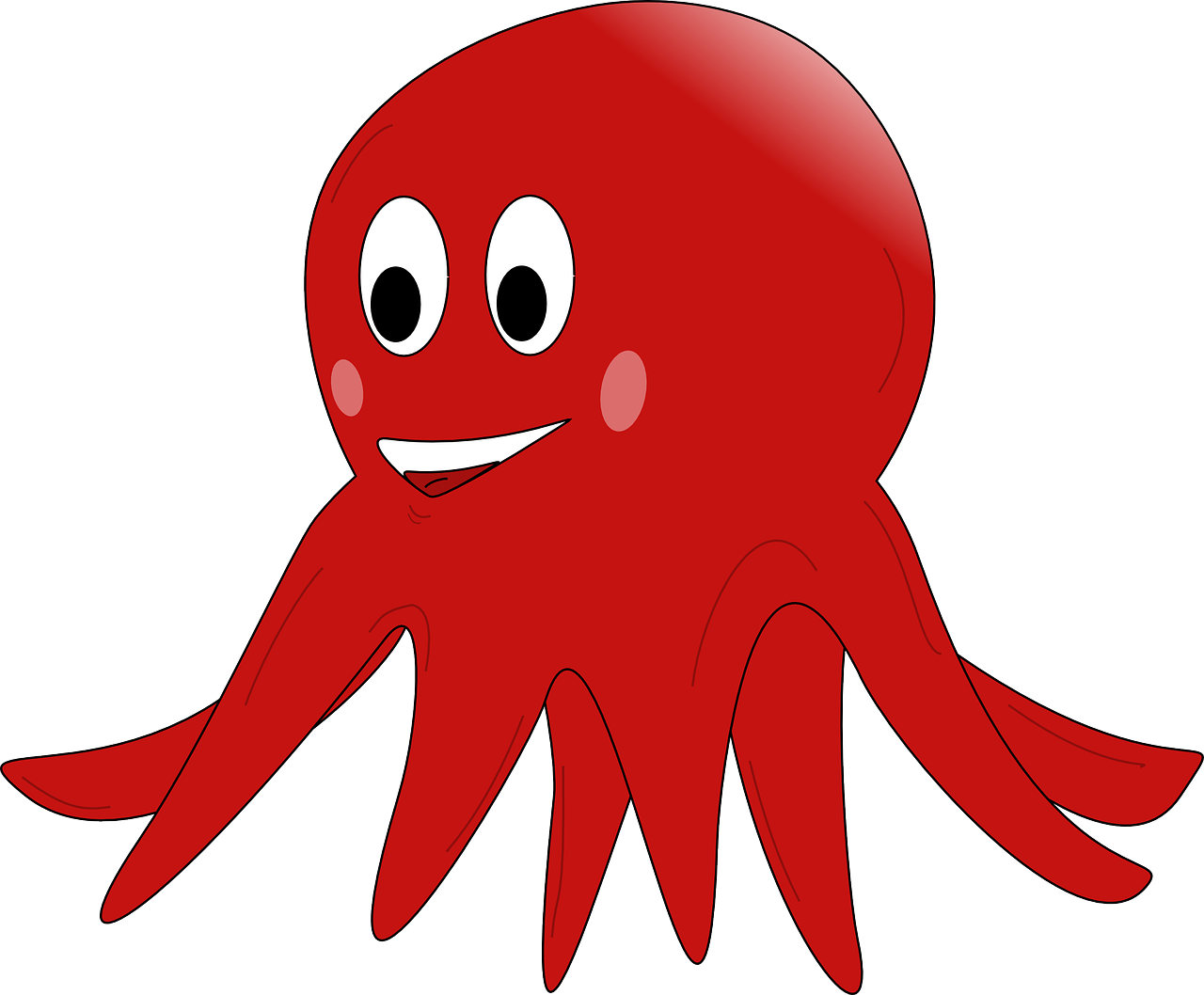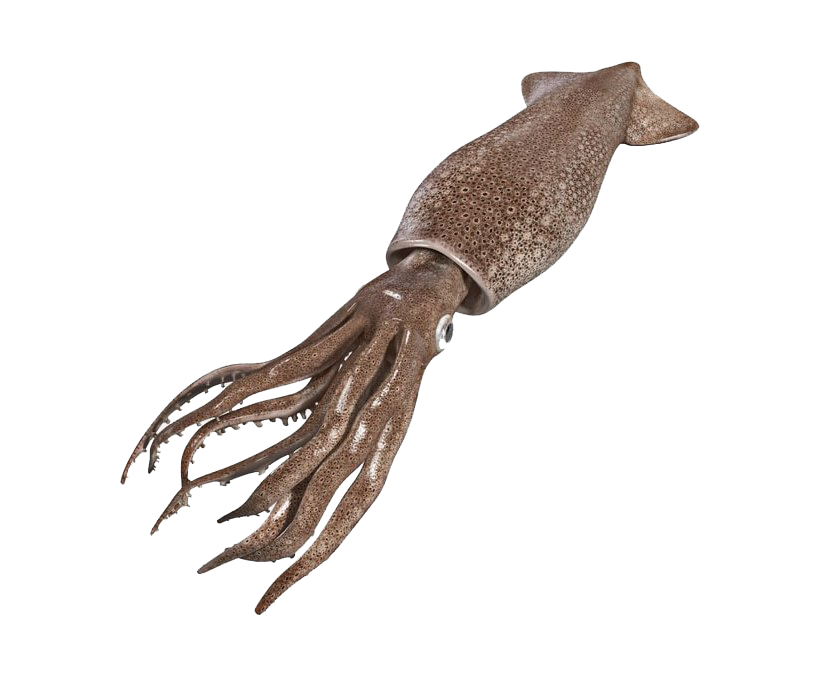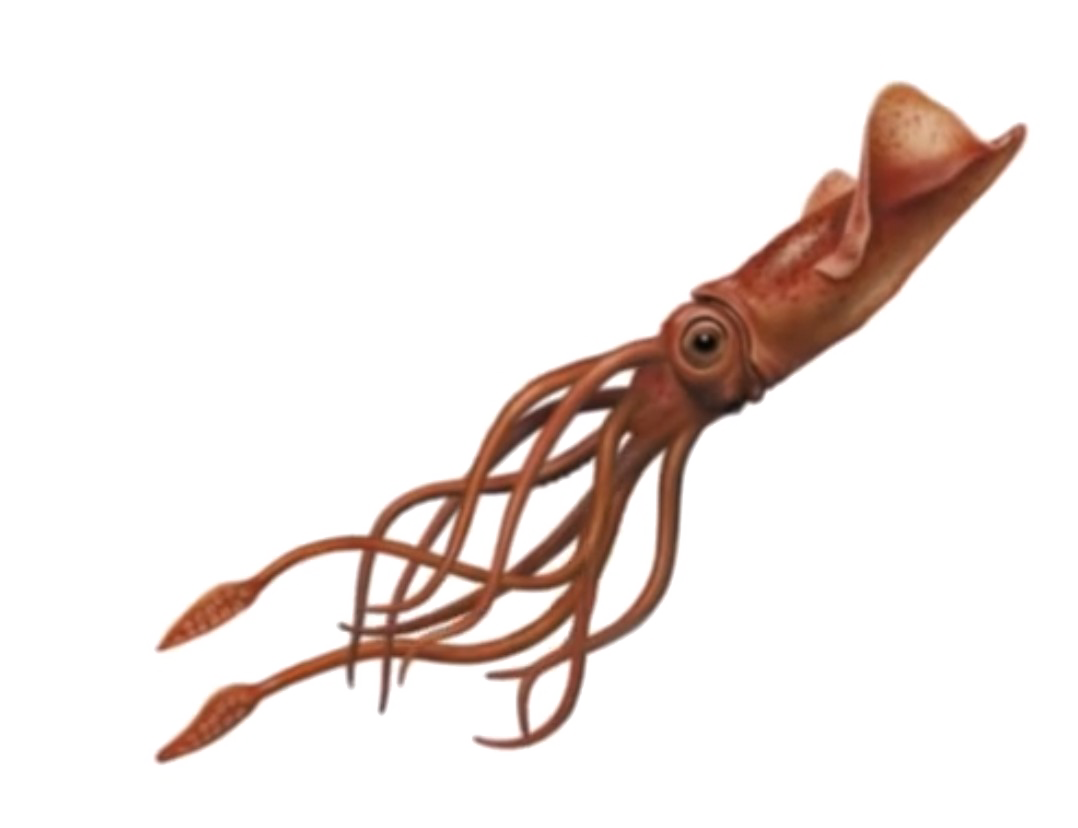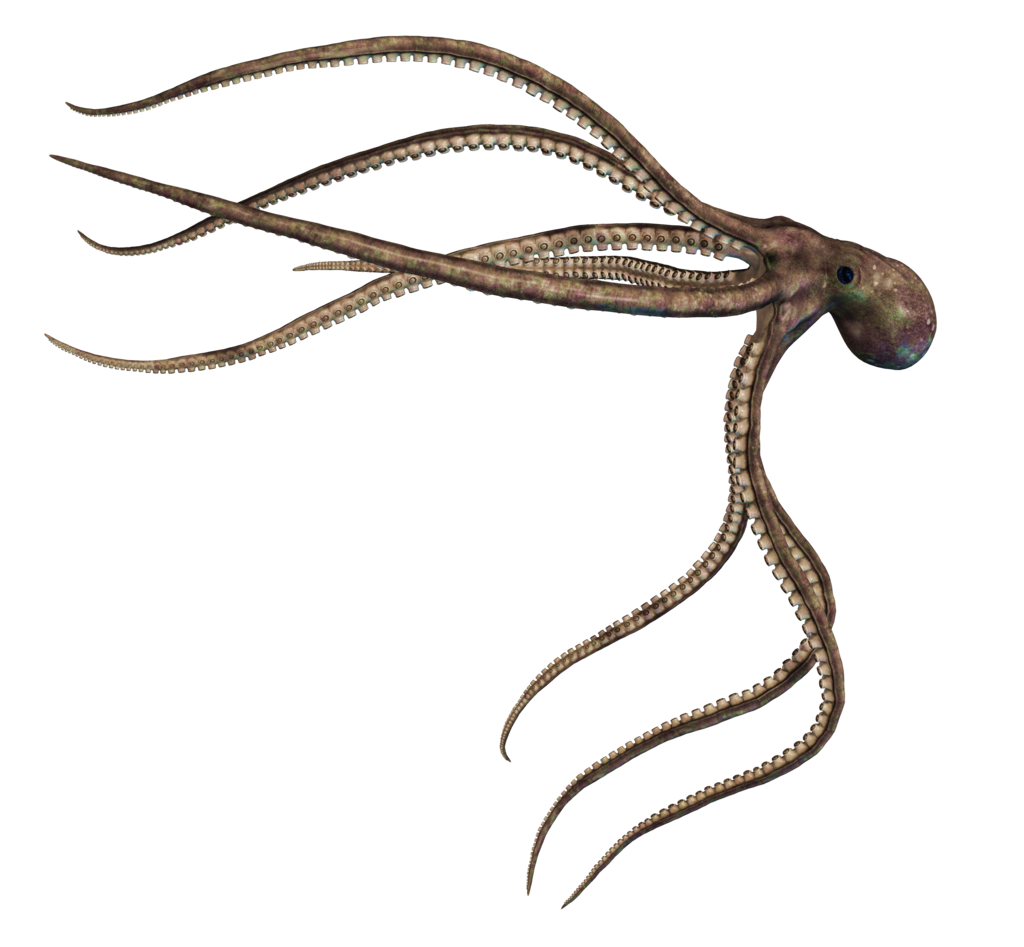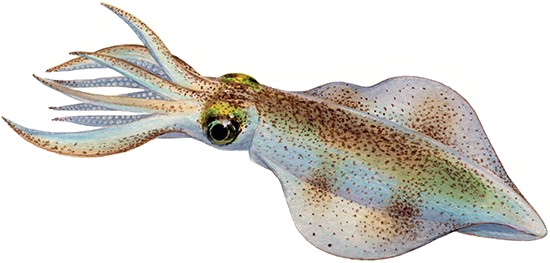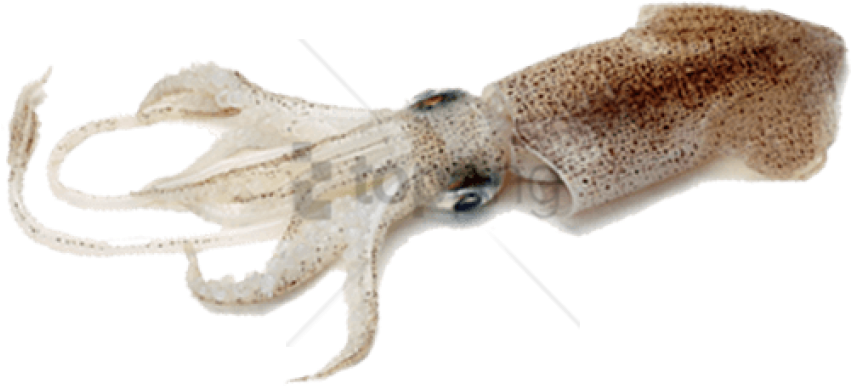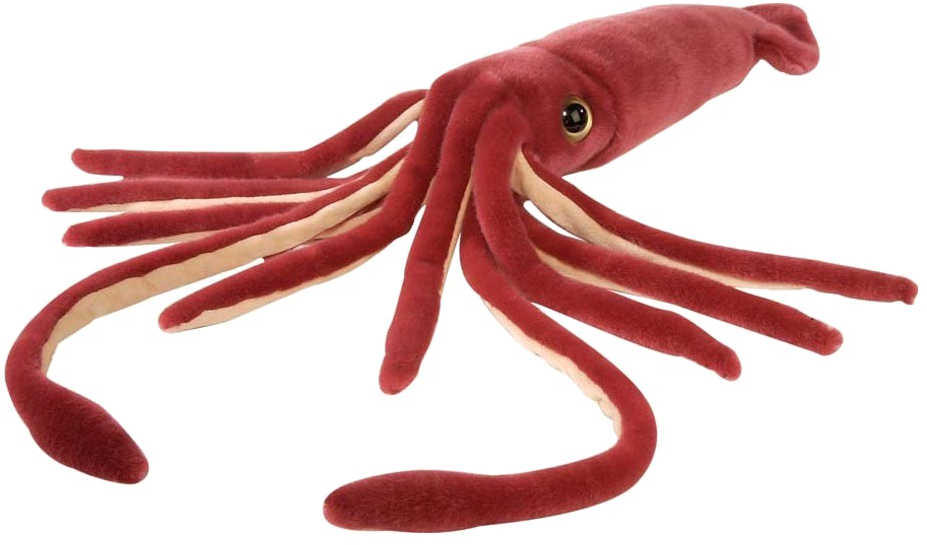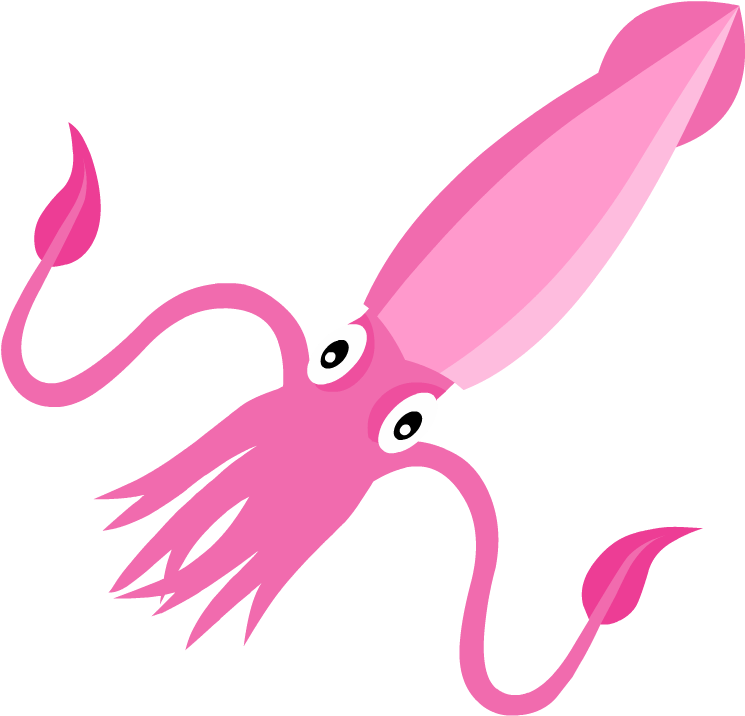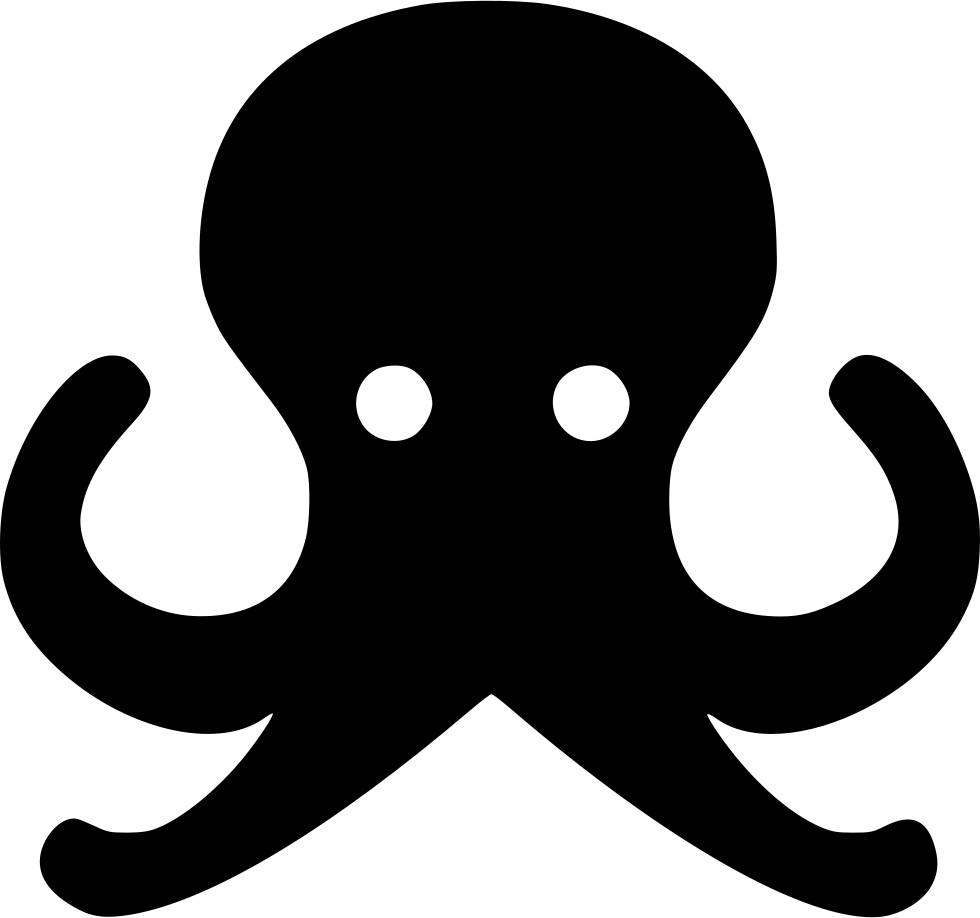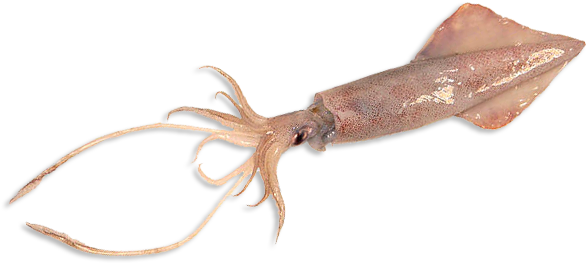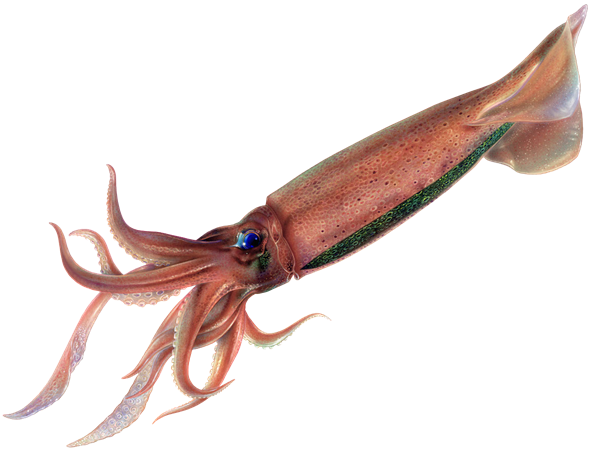Download top and best high-quality free Squid PNG Transparent Images backgrounds available in various sizes. To view the full PNG size resolution click on any of the below image thumbnail.
License Info: Creative Commons 4.0 BY-NC
Squid are cephalopods with elongated bodies, big eyes, eight limbs, and two tentacles that belong to the Decapodiformes superorder. Squid have a distinct head, bilateral symmetry, and a mantle, much like all other cephalopods. They are mostly soft-bodied, like octopuses, but they contain a tiny internal skeleton of chitin in the shape of a rod-like gladius or pen.
During the Jurassic period, squid separated from other cephalopods and now serve in a similar capacity to teleost fish as open-water predators of similar size and behavior. In the open water food web, they play an essential role. The eight arms are used to grip and manipulate prey, while the two lengthy tentacles are utilized to grasp it. The beak next chops the meal into bite-sized bits that can be swallowed. Squid are fast swimmers who use jet propulsion to propel themselves and rely on sight to seek their food. Humboldt squid have been recorded hunting collaboratively in groups, making them one of the most intelligent invertebrates. Sharks, other fish, marine birds, seals, and cetaceans, notably sperm whales, feed on them.
For concealment and signaling, squid may change color. Many species may expel a cloud of ink to distract predators, while some are bioluminescent and use their light for counter-illumination concealment.
Commercial fisheries in Japan, the Mediterranean, the southwestern Atlantic, the eastern Pacific, and elsewhere employ squid for human food. They are commonly referred to as “calamari” and are used in various cuisines across the world. Since classical times, squid have been depicted in literature, particularly in tales of enormous squid and sea monsters.
Squid belong to the Cephalopoda class, subclass Coleoidea. The squid orders Myopsida and Oegopsida belong to the Decapodiformes superorder (from the Greek for “ten-legged”). Although they are taxonomically separate from squids and have distinguishable gross anatomical characteristics, two additional orders of decapodiform cephalopods are also known as squids. The bobtail squid belongs to the Sepiolida order, whereas the ram’s horn squid belongs to the monotypic Spirulida order. The vampire squid (Vampyroteuthis infernalis), on the other hand, has more in common with octopuses than with any other squid.
Sanchez et al., 2018 provided the basis for the cladogram, which is not entirely resolved. They employed mitochondrial and nuclear DNA marker sequences in their molecular phylogeny, and they say that obtaining a strong tree “has proven exceedingly difficult.” If the Sepiidae cuttlefish are considered a kind of squid, the squids, except the vampire squid, form a clade as shown. All families not listed in those orders belong to the paraphyletic order “Oegopsida,” except Sepiadariidae and Sepiidae, which belong to “Sepiida.”
At the end of the Paleozoic, crown coleoids (the progenitors of octopuses and squid) diverged in the Permian. During the Jurassic, squid diverged, although many squid families arose during or after the Cretaceous. Both the coleoids and the teleost fish underwent a lot of adaptive radiation simultaneously, and the two current groups are quite similar in size, ecology, habitat, anatomy, and behavior. However, some fish migrated into fresh water while the coleoids stayed in the sea.
Download Squid PNG images transparent gallery.
- Squid Animal PNG
Resolution: 609 × 447
Size: 293 KB
Image Format: .png
Download
- Squid Animal PNG Pic
Resolution: 945 × 417
Size: 520 KB
Image Format: .png
Download
- Squid Animal PNG File
Resolution: 1233 × 885
Size: 770 KB
Image Format: .png
Download
- Squid Animal PNG Image
Resolution: 960 × 479
Size: 644 KB
Image Format: .png
Download
- Squid Animal PNG Photo
Resolution: 450 × 300
Size: 28 KB
Image Format: .png
Download
- Squid PNG Pic
Resolution: 1904 × 2660
Size: 494 KB
Image Format: .png
Download
- Squid PNG File
Resolution: 600 × 674
Size: 77 KB
Image Format: .png
Download
- Squid PNG Cutout
Resolution: 1300 × 878
Size: 1082 KB
Image Format: .png
Download
- Squid PNG Images
Resolution: 641 × 325
Size: 134 KB
Image Format: .png
Download
- Squid PNG Photos
Resolution: 512 × 512
Size: 22 KB
Image Format: .png
Download
- Squid Transparent
Resolution: 675 × 222
Size: 53 KB
Image Format: .png
Download
- Squid
Resolution: 480 × 307
Size: 12 KB
Image Format: .gif
Download
- Squid PNG Clipart
Resolution: 675 × 222
Size: 23 KB
Image Format: .png
Download
- Squid PNG Picture
Resolution: 1400 × 443
Size: 362 KB
Image Format: .png
Download
- Squid PNG Image
Resolution: 496 × 648
Size: 39 KB
Image Format: .gif
Download
- Squid PNG HD Image
Resolution: 4141 × 1984
Size: 717 KB
Image Format: .png
Download
- Squid Reef Creature
Resolution: 675 × 222
Size: 14 KB
Image Format: .png
Download
- Squid Reef Creature PNG
Resolution: 512 × 512
Size: 9 KB
Image Format: .png
Download
- Squid Reef Creature PNG Pic
Resolution: 640 × 497
Size: 142 KB
Image Format: .png
Download
- Squid Reef Creature PNG File
Resolution: 1600 × 974
Size: 1709 KB
Image Format: .png
Download
- Squid Reef Creature PNG Image
Resolution: 1216 × 580
Size: 587 KB
Image Format: .png
Download
- Squid Reef Creature PNG Photo
Resolution: 547 × 536
Size: 64 KB
Image Format: .png
Download
- Squid No Background
Resolution: 960 × 540
Size: 110 KB
Image Format: .png
Download
- Squid Reef Creature PNG Cutout
Resolution: 675 × 338
Size: 210 KB
Image Format: .png
Download
- Squid Reef Creature PNG Images
Resolution: 1000 × 600
Size: 512 KB
Image Format: .png
Download
- Squid Reef Creature PNG Photos
Resolution: 1433 × 536
Size: 559 KB
Image Format: .png
Download
- Squid Reef Creature Transparent
Resolution: 800 × 600
Size: 254 KB
Image Format: .png
Download
- Squid Reef Creature PNG Clipart
Resolution: 640 × 611
Size: 328 KB
Image Format: .png
Download
- Squid Reef Creature PNG Picture
Resolution: 473 × 480
Size: 262 KB
Image Format: .png
Download
- Squid Reef Creature PNG HD Image
Resolution: 495 × 212
Size: 41 KB
Image Format: .png
Download
- Squid Reef Creature PNG Image HD
Resolution: 664 × 340
Size: 73 KB
Image Format: .png
Download
- Squid Reef Creature No Background
Resolution: 512 × 512
Size: 19 KB
Image Format: .png
Download
- Squid Reef Creature PNG Images HD
Resolution: 512 × 512
Size: 15 KB
Image Format: .png
Download
- Squid Reef Creature PNG Free Image
Resolution: 990 × 588
Size: 220 KB
Image Format: .png
Download
- Squid Reef Creature PNG Image File
Resolution: 1280 × 1058
Size: 199 KB
Image Format: .png
Download
- Squid PNG
Resolution: 820 × 680
Size: 244 KB
Image Format: .png
Download
- Squid PNG Photo
Resolution: 1078 × 828
Size: 288 KB
Image Format: .png
Download
- Squid PNG Image HD
Resolution: 1024 × 947
Size: 362 KB
Image Format: .png
Download
- Squid PNG Images HD
Resolution: 550 × 263
Size: 180 KB
Image Format: .png
Download
- Squid PNG Free Image
Resolution: 851 × 386
Size: 339 KB
Image Format: .png
Download
- Squid PNG Image File
Resolution: 927 × 545
Size: 524 KB
Image Format: .png
Download
- Squid Background PNG
Resolution: 745 × 716
Size: 27 KB
Image Format: .png
Download
- Squid PNG Background
Resolution: 980 × 918
Size: 50 KB
Image Format: .png
Download
- Squid Animal PNG Cutout
Resolution: 587 × 263
Size: 112 KB
Image Format: .png
Download
- Squid Animal
Resolution: 592 × 450
Size: 181 KB
Image Format: .png
Download
